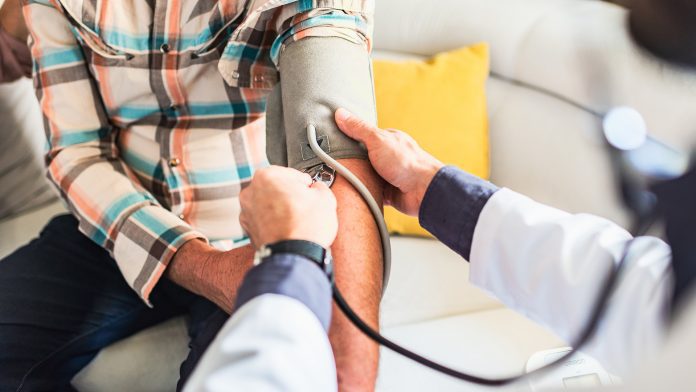
The number of people worldwide living with hypertension has doubled over the last 30 years to over 1.2 billion, a new study has found.
Led by researchers from Imperial College London, the study involved the analysis of data taken from over 100 million people in 184 countries over three decades. The findings indicate that the number of people living with hypertension across the globe has increased from an estimated 331 million women and 317 million men in 1990, to 626 million women and 652 million men in 2019.
The findings from the international study have been published in The Lancet.
Hypertension, also known as high blood pressure, is a serious medical condition that significantly increases the risk of heart, brain, kidney, and other diseases. Although high blood pressure can be caused by modifiable factors, such as diet and physical inactivity, it can also be hereditary. Hypertension can be easily detected by measuring blood pressure, at home or in a health centre, and can often be treated effectively with low-cost medication.
The study, conducted by a global network of physicians and researchers, used blood pressure measurement and treatment data from over 100 million people aged 30 to 79, together covering 99% of the global population. Hypertension was defined as having systolic blood pressure of 140 mm Hg or greater, diastolic blood pressure of 90 mm Hg or greater, or taking medication for high blood pressure.
Increase mostly seen in low- and middle-income countries
From the data, the researchers observed that most of the increase in hypertension rates occurred in low- and middle-income countries, whilst the rate of hypertension has decreased in wealthier countries. Canada, Peru, and Switzerland had some of the lowest rates in the world in 2019, while some of the highest were seen in the Dominican Republic, Jamaica, and Paraguay for women and Hungary, Paraguay, and Poland for men.
Over half of people were unaware of their condition
Another significant finding was that, although the condition is straightforward to diagnose and relatively easy to treat with low-cost drugs, almost half of people (41% of women and 51% of men) with hypertension worldwide in 2019 were unaware of their condition, and more than half of women (53%) and men (62%) with the condition were not treated for it. Worldwide, blood pressure was controlled in fewer than one in four women and one in five men with hypertension.
Improvements in care
Large improvements in treatment and control rates seen in some middle-income countries, including Costa Rica, Kazakhstan, South Africa, Brazil, Turkey, and Iran, over the past three decades show that the expansion of universal health coverage and strengthening primary care have been instrumental in improving high blood pressure care and reducing the burden of this condition. With some of these countries, like Costa Rica, achieving treatment and control rates as good as, or better than, many high-income countries.
Professor Majid Ezzati, Imperial College London, UK, the senior author of the study, said: “Despite medical and pharmacological advances over decades, global progress in hypertension management has been slow, and the vast majority of people with hypertension remain untreated, with large disadvantages in low- and middle-income countries.
“Our analysis has revealed good practice in diagnosing and treating hypertension, not just in high-income countries but also in middle-income countries. These successes show that preventing high blood pressure and improving its detection, treatment, and control are feasible across low- and middle-income settings if international donors and national governments commit to addressing this major cause of disease and death.
“Policies that enable people in the poorest countries to access healthier foods – particularly reducing salt intake and making fruit and vegetables more affordable and accessible – alongside improving detection by expanding universal health coverage and primary care, and ensuring uninterrupted access to effective drugs, must be financed and implemented to slow the growing epidemic of high blood pressure in low- and middle-income countries.”
Potential limitations
The authors note that, whilst the study provides the first comparable estimates of blood pressure prevalence, diagnosis, treatment, and control in adults for all countries of the world; it may be affected by a lack of data in some countries, especially in Oceania and sub-Saharan Africa.
Co-author Leanne Riley from WHO, Switzerland, said: “Low detection and treatment rates that persist in the world’s poorest nations, coupled with the rising number of people who have hypertension, will shift an increasing share of the burden of vascular and kidney diseases to sub-Saharan Africa, Oceania, and South Asia.
“Improving the capacity of these countries to detect and treat hypertension as part of primary healthcare and universal health coverage must be accelerated.”






















